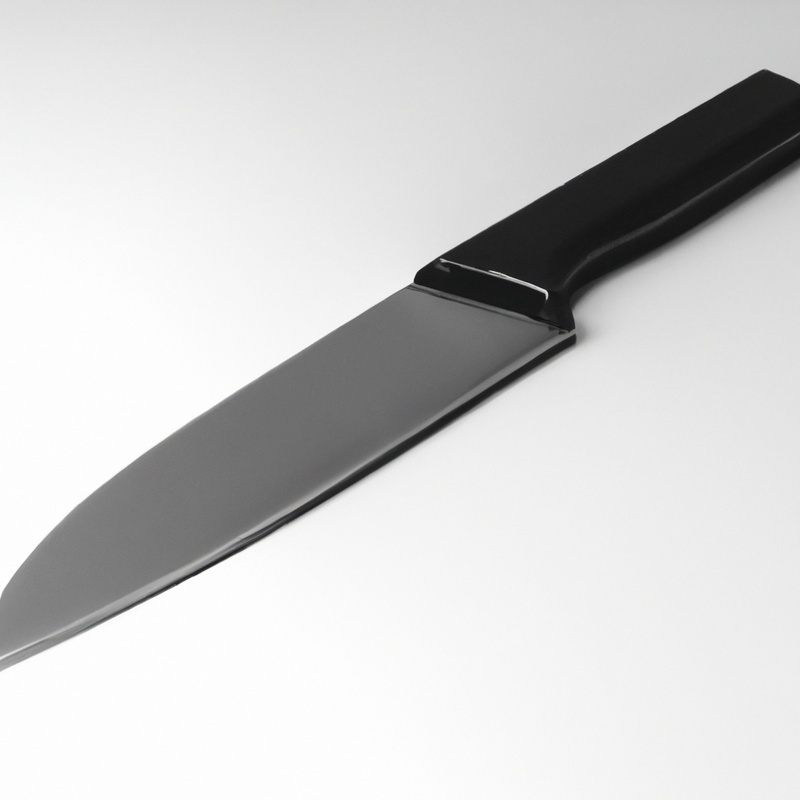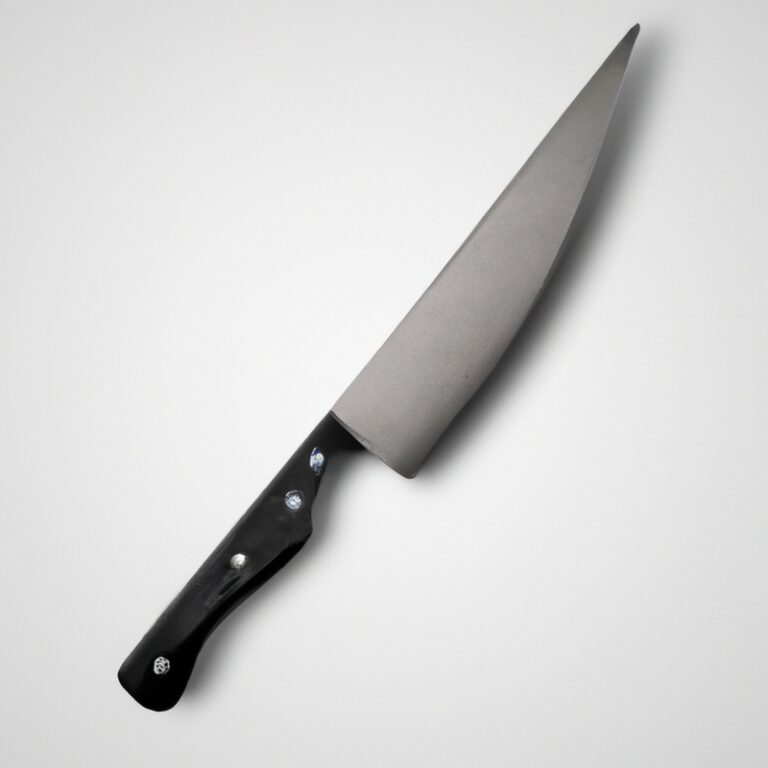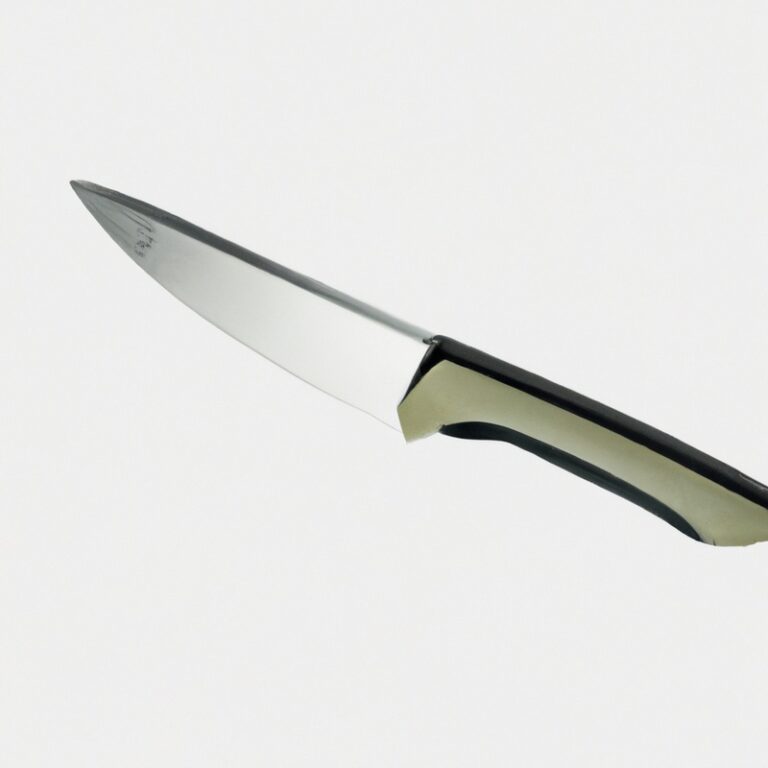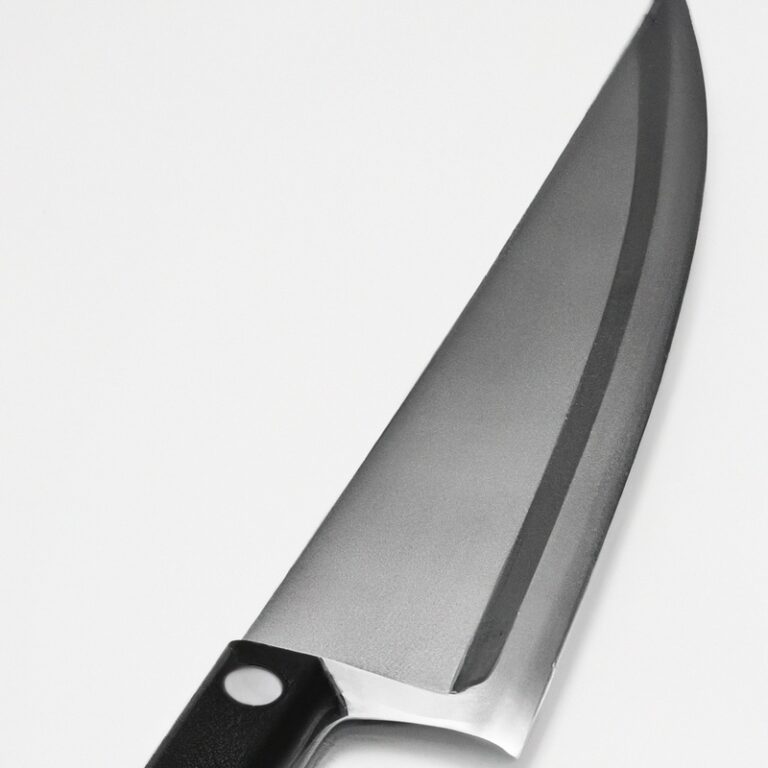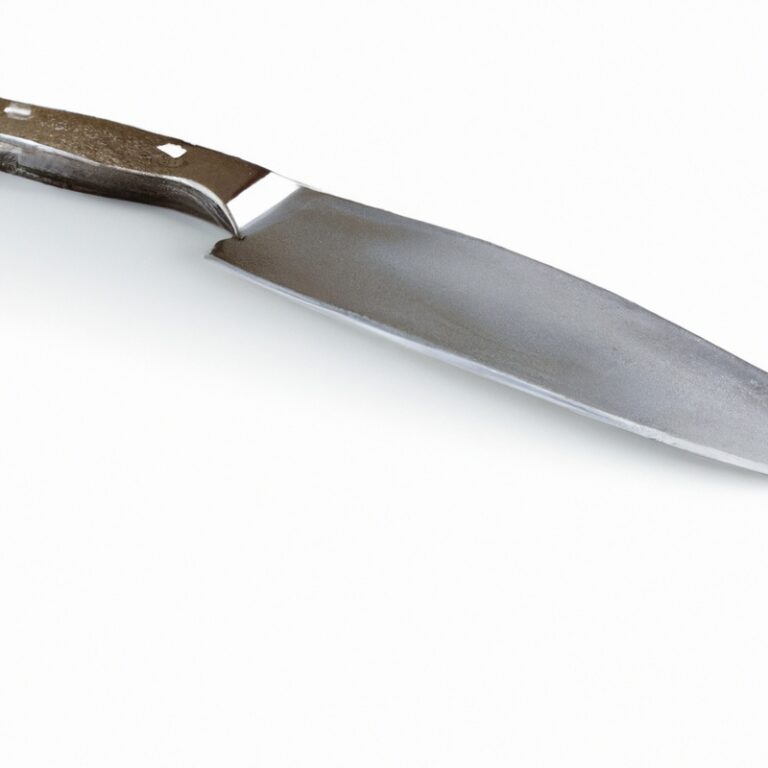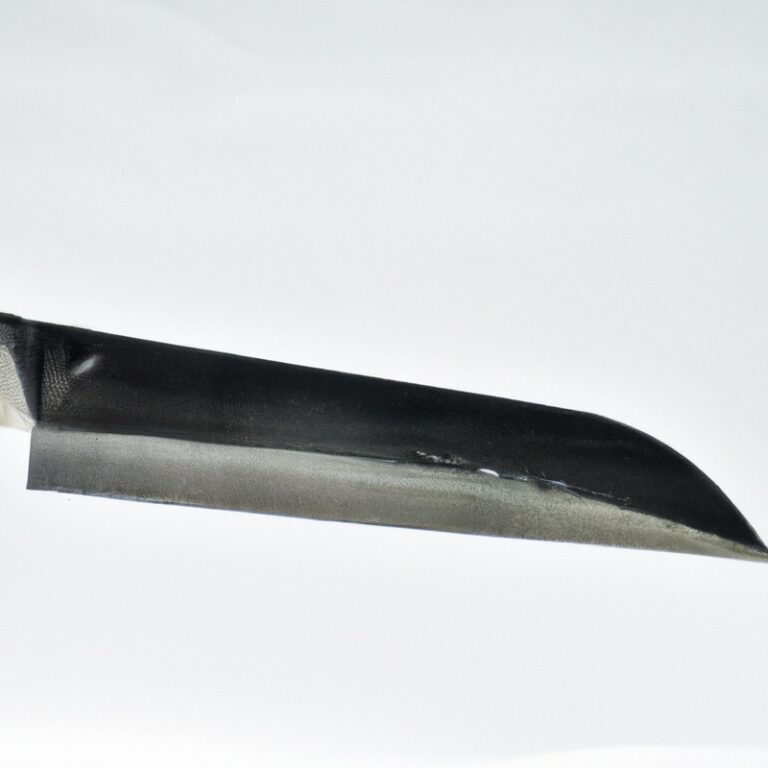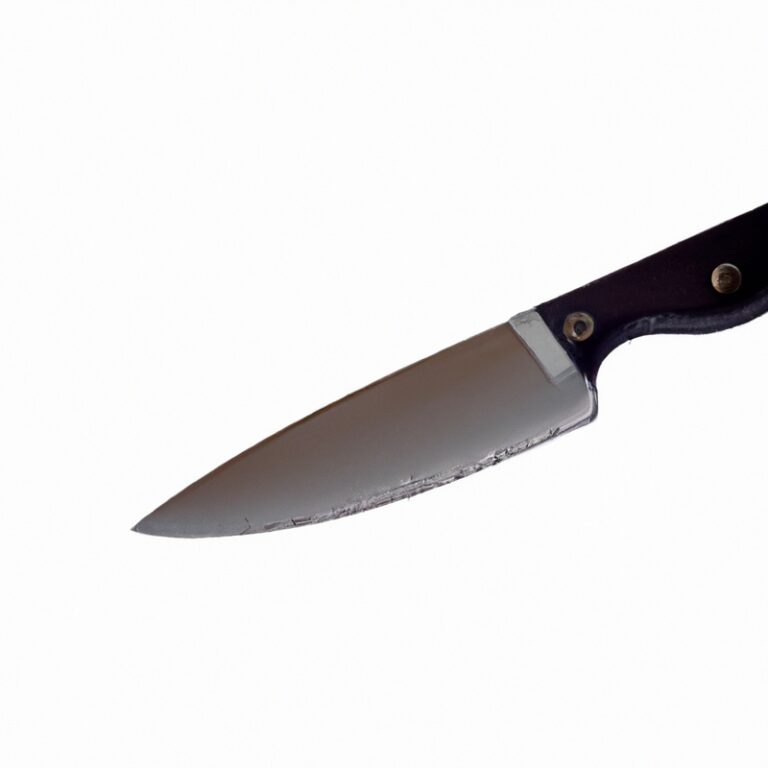How Can I Maintain The Sharpness Of My Serrated Knife For Longer-Lasting Performance?
Key Takeaways:
- Regularly sharpen your serrated knife with a specialized serrated knife sharpener.
- Store your serrated knife properly to prevent dulling, such as in a knife block or on a magnetic strip.
- Avoid cutting hard or frozen foods with your serrated knife to maintain its sharpness.
- Clean and dry your serrated knife after each use to prevent corrosion and maintain its performance.
Are you tired of your serrated knife losing its sharpness way too quickly? Have you found yourself struggling to slice through bread or delicate fruits because your knife just isn’t up to the task?
Well, fret no more! In this article, I’m going to share with you some expert tips and techniques to help you maintain the sharpness of your serrated knife for longer-lasting performance.
We’ll delve into the importance of keeping your knife sharp, the benefits it brings, and I’ll even share some common mistakes to avoid. So, let’s get sharpening and make your serrated knife a slicing superstar!
| Tips | Explanation |
|---|---|
| 1. Avoid cutting hard surfaces | Serrated knives are designed for cutting through softer materials. Cutting on hard surfaces like countertops or plates can damage the serrations. |
| 2. Hand wash and dry | Handwashing is recommended to prevent damage from dishwasher heat and detergents. Dry immediately to prevent rusting. |
| 3. Use a honing rod | Regularly using a honing rod can help align the serrations and keep them sharp. Hold the rod at a 20-degree angle and draw the knife through the serrations. |
| 4. Sharpen with a serrated knife sharpener | When the knife becomes dull, use a serrated knife sharpener specifically designed for serrations. Follow the manufacturer’s instructions for best results. |
| 5. Store properly | Store the knife in a knife block or sheath to protect the serrations from touching other utensils, which can dull them. |
Understanding the importance of maintaining the sharpness of a serrated knife
Why is it important to maintain the sharpness of a serrated knife?
Maintaining the sharpness of a serrated knife is important for a few reasons. Firstly, a sharp blade cuts through food more easily and efficiently, allowing for smoother and precise cuts.
This is especially crucial when working with delicate ingredients like bread or tomatoes, as a sharp serrated edge prevents squishing or tearing.
Additionally, a sharp knife reduces the risk of accidents and injuries. With a dull blade, you may need to use more force, increasing the chances of slipping and cutting yourself.
Overall, keeping your serrated knife sharp ensures a better cooking experience and promotes kitchen safety.
The benefits of having a sharp serrated knife
Having a sharp serrated knife offers several benefits. Firstly, it makes cutting through tough or crusty surfaces effortless.
Whether you’re slicing a loaf of bread or a juicy tomato, a sharp serrated knife glides through with precision, preventing squashing and preserving the integrity of the food.
Secondly, a sharp serrated knife ensures clean and uniform slices. The sharp teeth grip the food, allowing for controlled cutting and reducing the risk of slips or uneven cuts.
Lastly, a sharp serrated knife maximizes your efficiency in the kitchen.
With smooth and effortless cutting, you can save time and energy while preparing meals.
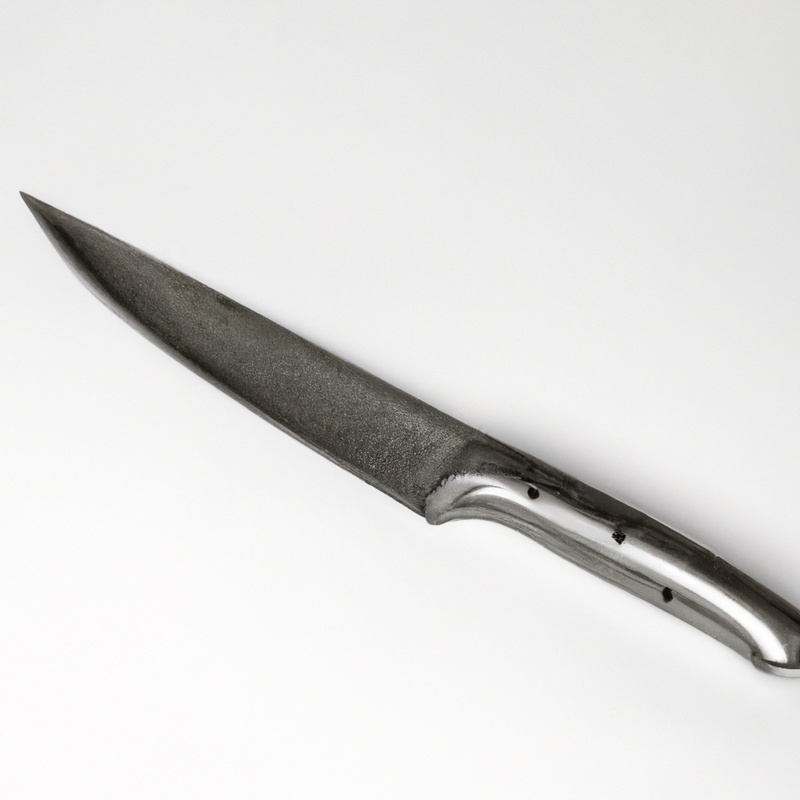
Tips for maintaining the sharpness of a serrated knife
Choosing the right cutting board for your serrated knife
Choosing the right cutting board for your serrated knife is essential to maintain its sharpness and prevent damage. Here are a few tips to consider:
- Avoid glass or stone cutting boards: These materials can dull the serrated edge quickly.
- Opt for wooden or plastic cutting boards: These materials are gentle on the knife’s edge and won’t cause premature dulling.
- Use a cutting board with a soft surface: A soft cutting board, such as one made from bamboo or rubber, helps absorb the impact and reduces the stress on the knife edge.
- Size matters: Make sure your cutting board is large enough to accommodate the size of your serrated knife comfortably.
- Separate boards for different tasks: To avoid cross-contamination and excessive wear, use separate cutting boards for raw meat, vegetables, and other ingredients.
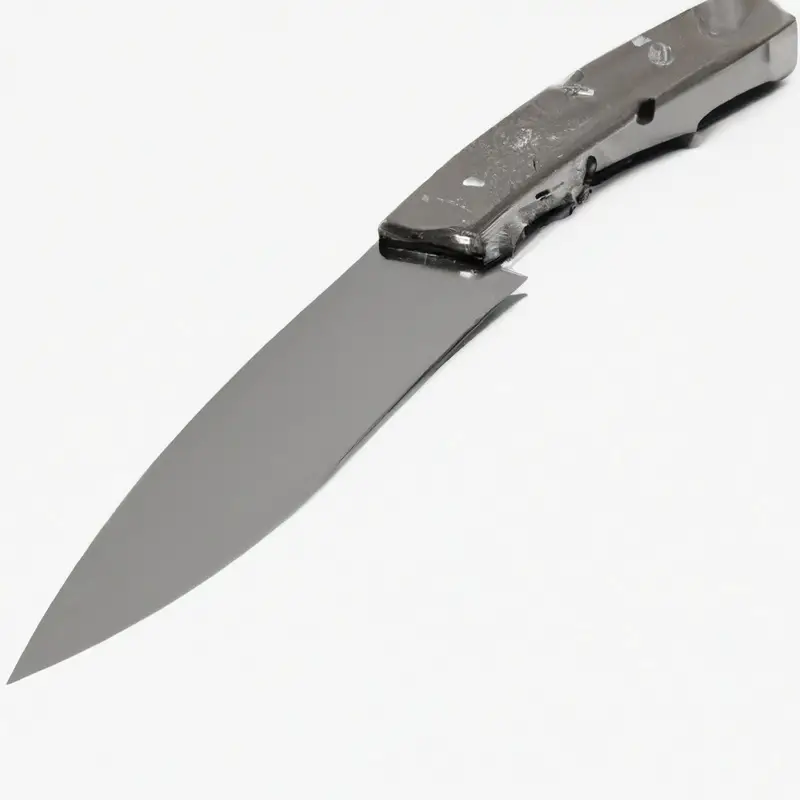
Proper handling and storage of a serrated knife
When it comes to properly handling and storing a serrated knife, there are a few key things to keep in mind. Firstly, always use a cutting board that won’t dull the teeth of the knife.
Avoid hard surfaces like glass or stone, and opt for wood or plastic instead.
Secondly, be gentle with your knife. Avoid twisting or applying excessive force, as this can damage the teeth.
Finally, store your serrated knife separately from other knives to prevent any accidental damage.
A knife block or sheath is a great option for storage.
Tips for cleaning and drying a serrated knife
To clean and dry a serrated knife, gently wash it by hand using warm water and mild dish soap. Avoid scrubbing too vigorously as it can damage the teeth.
Rinse thoroughly and pat dry with a clean towel, ensuring all moisture is removed.
Avoid leaving the knife to air dry, as this can potentially lead to rusting. Instead, it is recommended to immediately dry the knife after washing.
Storing the knife in a dry place, away from moisture, will also help maintain its sharpness and prevent any potential damage.
Remember to handle the serrated knife with care to preserve its longevity.
Sharpening techniques for a serrated knife
Using a honing rod to maintain the serrated knife’s sharpness
To maintain the sharpness of a serrated knife, using a honing rod can be quite effective. A honing rod, also known as a sharpening steel, helps to straighten and realign the edges of the serrations, ensuring that they remain sharp.
Here’s how you can use a honing rod to maintain your serrated knife’s sharpness:
- Hold the honing rod upright or at a slight angle.
- Take the serrated knife and hold it at a 20-degree angle against the honing rod.
- Gradually move the knife’s edge along the rod, following the curve of the serrations.
- Apply light pressure and repeat this motion for each serration, making sure to cover the entire length of the blade.
- Repeat the process on the opposite side of the knife, honing each serration in the same manner.
- After honing, remember to clean the knife to remove any metal shavings or debris.
By regularly using a honing rod to maintain your serrated knife’s sharpness, you can ensure that it stays in peak cutting condition for longer-lasting performance.
Performing a DIY serrated knife sharpening at home
Performing a DIY serrated knife sharpening at home can be a bit more challenging compared to sharpening a regular knife. However, with the right technique, it is still possible to maintain the sharpness of your serrated knife.
One effective way is to use a ceramic honing rod specifically designed for serrated knives.
Gently run the rod along the serrations, making sure to maintain a consistent angle. Another method is to use a small needle file to individually sharpen each serration.
However, this requires precision and patience.
It’s essential to remember that regular maintenance and care are key to keeping your serrated knife sharp and efficient.
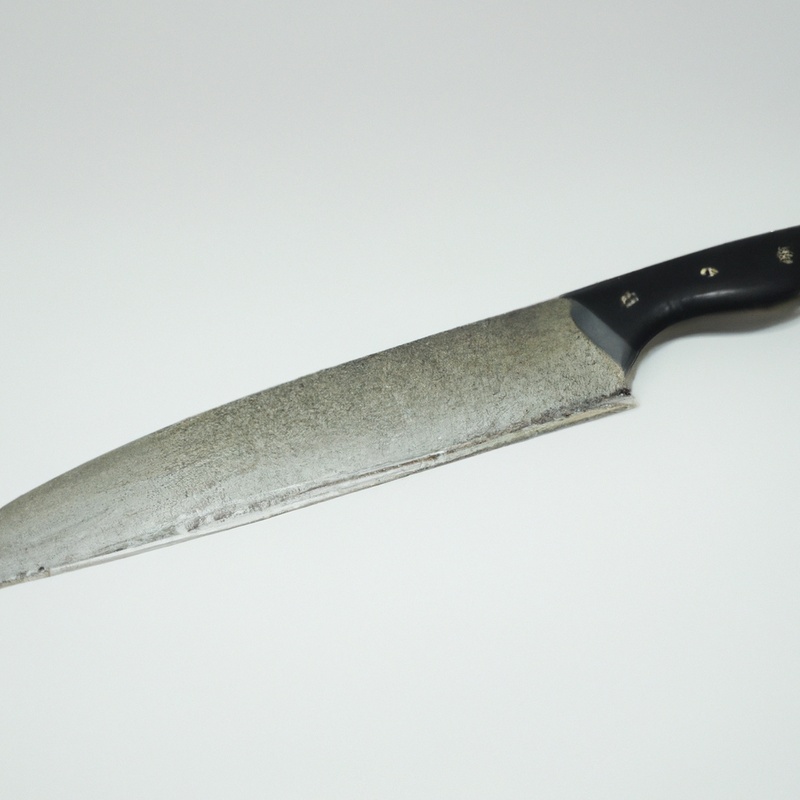
Seeking professional help for sharpening a serrated knife
If you’re looking to sharpen your serrated knife and you’re not confident in doing it yourself, seeking professional help is a great option. A professional knife sharpener has the expertise and specialized equipment needed to sharpen your serrated knife effectively and safely.
They will be able to restore the sharpness of the individual serrations, ensuring that your knife performs at its best.
Professional sharpening can also help prolong the overall lifespan of your serrated knife. Don’t hesitate to reach out to a professional for help if you’re unsure about sharpening your serrated knife on your own.
Common mistakes to avoid while maintaining a serrated knife
Avoiding improper cutting techniques that can damage the serrated knife
When using a serrated knife, it’s important to employ proper cutting techniques to avoid damaging the blade. Here are some common mistakes to avoid:
- Don’t apply excessive force: The saw-like teeth on a serrated knife are designed to do the work for you. Avoid applying too much pressure or using a sawing motion that could bend or break the teeth.
- Avoid cutting on hard surfaces: Serrated knives are best used on softer surfaces, like bread or vegetables. Cutting on hard surfaces, such as glass or stone countertops, can dull or chip the blade.
- Don’t twist the knife: Twisting the blade while cutting can cause the teeth to catch and snap. Instead, maintain a steady, straight motion without any unnecessary twisting.
By practicing these proper cutting techniques, you can prolong the lifespan of your serrated knife and maintain its sharpness.
Not using the serrated knife for tasks it’s not designed for
Using a serrated knife for tasks it’s not designed for can damage the knife and affect its performance. Avoid using a serrated knife for chopping or cutting through hard materials like bones or frozen food.
The teeth of a serrated knife are meant for slicing, not for applying force.
Instead, use a chef’s knife or a cleaver for such tasks. By using the serrated knife only for its intended purpose, you can maintain its sharpness and prolong its lifespan.
Neglecting regular maintenance and care for a serrated knife
Neglecting regular maintenance and care for a serrated knife can significantly impact its performance and longevity. Proper care involves cleaning the knife after each use, ensuring it is completely dry, and storing it in a safe place.
Avoid exposing the knife to excessive moisture or harsh chemicals, as this can damage the blade.
Additionally, regular honing is essential to maintain the knife’s sharpness. Neglecting these simple maintenance steps can lead to dullness and reduced cutting efficiency of your serrated knife.
So, remember to give your knife the care it deserves to ensure its long-lasting performance.
Final Verdict
Maintaining the sharpness of a serrated knife is crucial for its longevity and optimal performance. By choosing the right cutting board, handling and storing the knife properly, and following appropriate cleaning and drying techniques, you can keep the blade sharp for longer.
Additionally, using a honing rod and seeking professional help for sharpening when needed are effective techniques.
Avoiding improper cutting techniques and using the knife for its intended purpose are also key. Regular maintenance and care will ensure that your serrated knife remains sharp and reliable for years to come.

